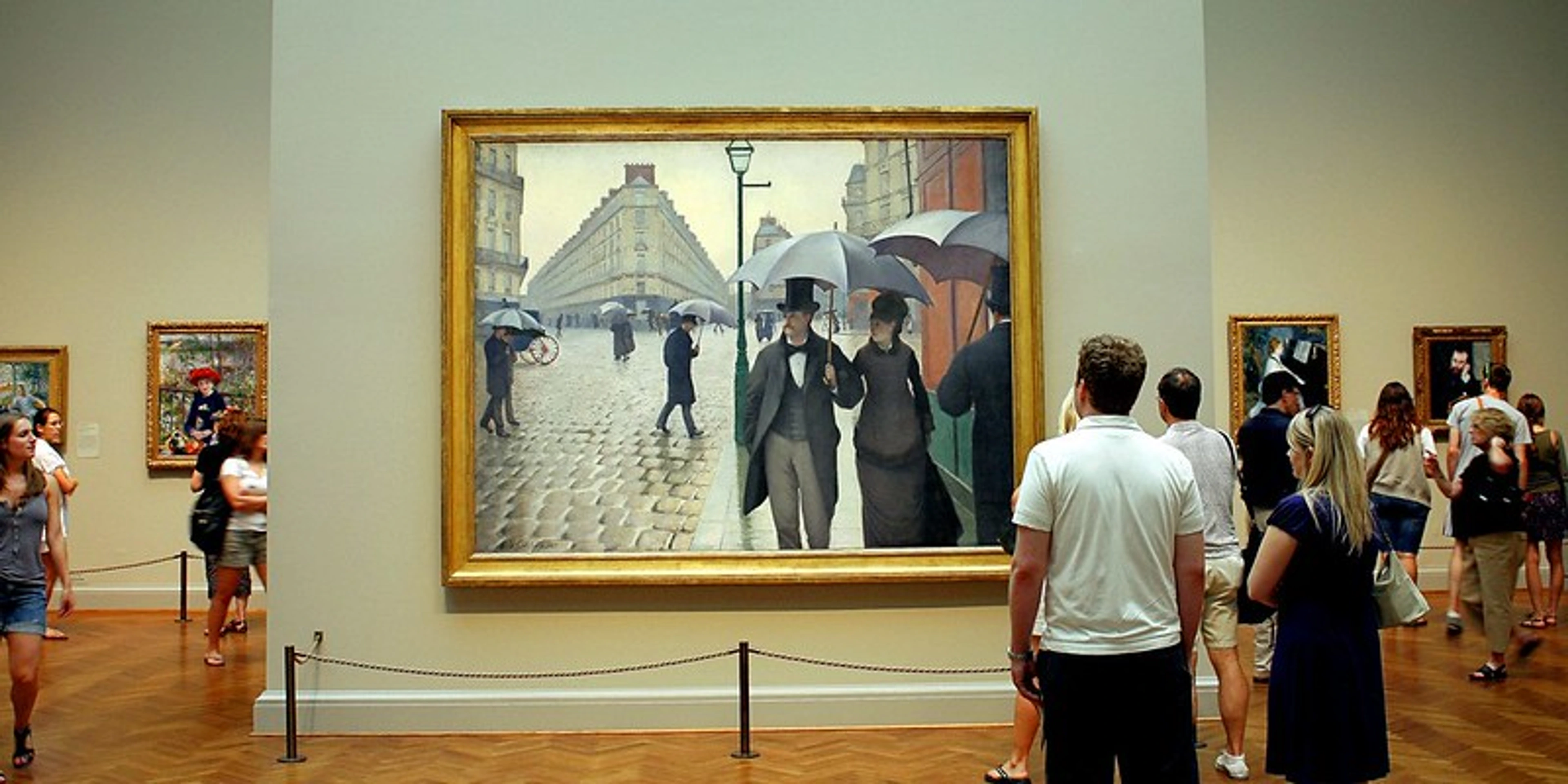
Art About Time: Exploring Moments, Memory, and the Fourth Dimension
Time. It’s that thing we’re always running out of, trying to save, wishing would speed up, or begging to slow down. It’s the ultimate slippery fish, isn’t it? One minute you’re meticulously planning your week, the next it’s Friday, and you’re wondering where it all went. As an artist, my relationship with time feels even more… complicated. There’s the time spent staring at a blank canvas (procrastination is an art form too, right?), the hours lost in the flow of creation, and then the weird temporal jump when a piece I made years ago suddenly feels like yesterday. It makes you think: how does art even begin to tackle something as immense and abstract as time? It feels a bit like trying to paint the wind – you can show its effects, the bending trees or the ruffled water, but capturing the invisible force itself? That's the artistic challenge.
Philosophers have grappled with time for millennia, often distinguishing between Chronos and Kairos. Chronos is the linear, chronological, tick-tock time we measure with clocks and calendars – the objective, external march forward. Kairos, on the other hand, is qualitative, subjective time – the opportune moment, the felt experience, the time that stretches or shrinks depending on our state of mind. This is the durée the philosopher Henri Bergson talked about – that felt, lived experience of time, where moments aren't discrete points but flow into one another, sometimes dragging, sometimes rushing by. Think of it like trying to capture the feeling of a long, lazy summer afternoon versus the frantic rush of a five-minute sketch before the light changes. Art often grapples with this internal, fluid sense of time, making the invisible visible. This personal wrestle isn't unique to me, of course. Look back through the history of art, and you'll find artists grappling with these very questions, obsessed with time forever.

Why Bother Painting the Clock? The Artist's Obsession with Time's Big Questions
So, why this artistic fixation? I think it boils down to some fundamental human truths and anxieties. We’re acutely aware of our own limited time. Mortality hangs over us, sometimes as a shadow, sometimes as a glaring spotlight. Art becomes a way to leave a mark, to say “I was here,” to create something that might just outlast us – a form of legacy. It’s a conversation across generations. You can see this echo in my own artistic journey, a series of moments captured. Sometimes, in the studio, the awareness of time passing fuels a frantic energy; other times, the slow, deliberate layering of paint feels like a small act of defiance against entropy itself. The physical act of applying paint, building up layers, waiting for them to dry – it's a process that forces you to slow down, to be present in the moment, a quiet rebellion against the relentless forward march of the clock. (Though, let's be honest, sometimes it's just me staring at the canvas wondering where the last hour went. Procrastination, remember? It's a temporal distortion field all its own.)
This awareness of mortality led to entire genres, like Vanitas and Memento Mori paintings, particularly popular in the 16th and 17th centuries. These weren't subtle; they were visual sermons on the fleeting nature of life and the inevitability of death. Skulls, wilting flowers, snuffed candles, hourglasses, and decaying fruit served as stark reminders that time is running out. It's a direct, symbolic confrontation with the clock, urging viewers to reflect on their own finite time.
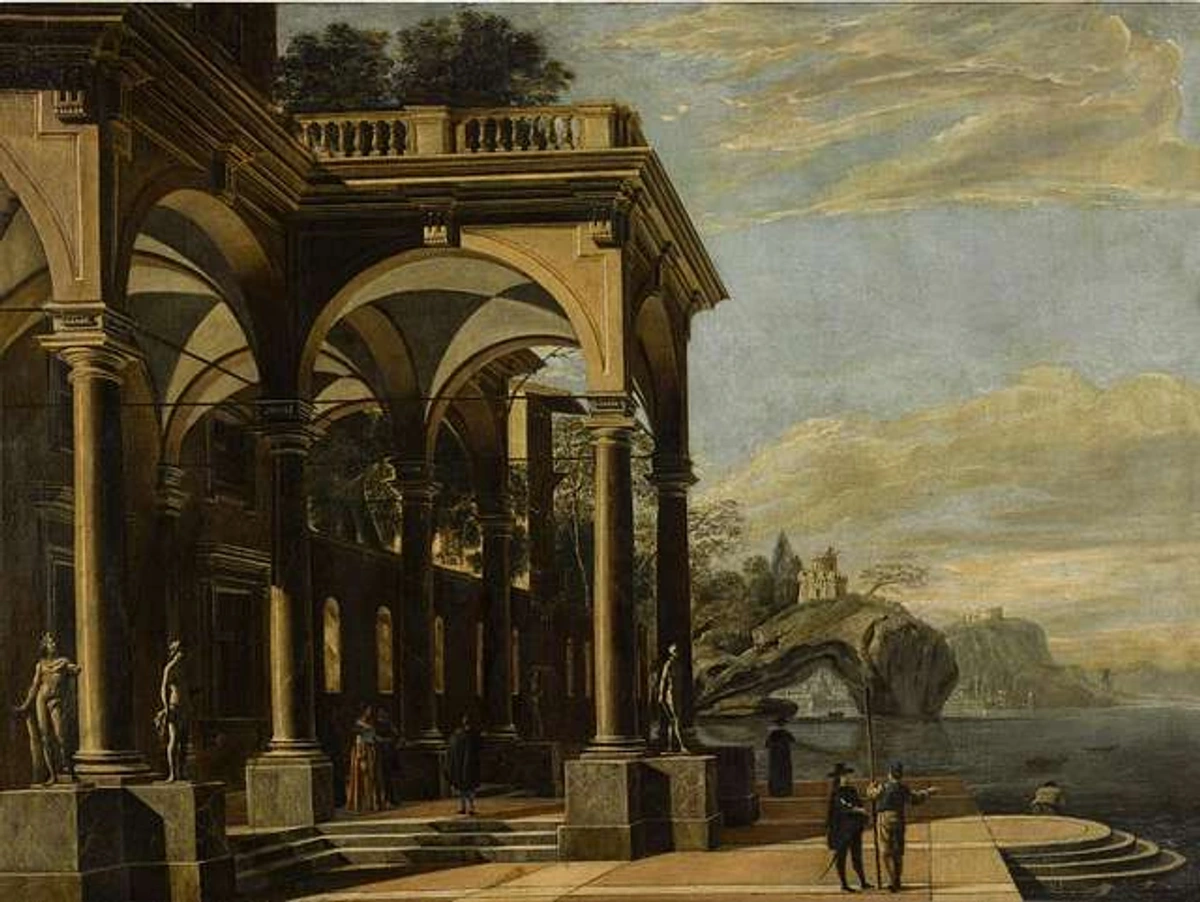
There's also memory. Time shapes our memories, and memories shape us. Art can be a vessel for nostalgia, a trigger for recollection, or an attempt to reconstruct the past – a visual palimpsest where layers of meaning accrue. Think about how a certain color or shape can instantly transport you back to a specific feeling or moment. A palimpsest, originally a manuscript page reused after the original writing was scraped off (but often still faintly visible), is a great metaphor here. Art can layer experiences, histories, and interpretations, with the past always subtly present beneath the surface of the 'now'. I remember trying to capture the specific light of a childhood afternoon, and the struggle wasn't just technical; it was about wrestling with the fading memory itself, trying to make the past visible in the present. Sometimes, a particular shade of blue or the texture of the paint surface in one of my abstract pieces feels like it holds the echo of a specific day or emotion from years ago. It's not intentional, but it's there, a layer of my own temporal history embedded in the work.
And then there’s change. Time means change – seasons shift, people age, empires rise and fall. Artists are often keen observers of this flux, documenting their world, commenting on societal shifts (like in protest art), or exploring the beauty in impermanence, like the Japanese concept of mono no aware – a gentle sadness at the transience of things. This could be documenting the changing face of a city, capturing the fleeting beauty of a flower before it wilts, or reflecting on personal transformation over years. It's about acknowledging that nothing is static, and art can be both a record of that change and a meditation on it. My own style has changed dramatically over the years; looking back at early work feels like seeing a different person, a snapshot of a past artistic self grappling with different ideas and techniques. That evolution is time made visible in my creative output.
These fundamental human concerns – our limited time, the nature of memory, and the inevitability of change – drive artists to find ways to not just depict the world in time, but to represent or evoke time itself. This leads us to the fascinating question of how they do it.
Capturing the Uncapturable: How Artists Show Time
Alright, so artists want to talk about time, from personal anxieties to cosmic cycles. But how do they actually do it? It’s not like you can just paint a clock (well, unless you’re Dalí, and even then, it’s not just a clock – those melting forms speak directly to the subjective, fluid durée of Kairos, not the rigid tick-tock of Chronos). The challenge is representing something invisible and constantly moving. Artists employ a fascinating array of techniques to make time visible, tangible, or felt.
Hier zijn enkele van de belangrijkste benaderingen die kunstenaars gebruiken om met tijd om te gaan:
Approach | Description | Examples |
|---|---|---|
| Narrative Art | Depicting a sequence of events to guide the viewer through a story over time. | Ancient Egyptian tomb paintings, Bayeux Tapestry, Renaissance fresco cycles, comics/graphic novels. |
| Freezing/Fragmenting | Capturing a fleeting moment or showing multiple viewpoints/moments within a single static frame. | Impressionism (Monet), Surrealism (Dalí, Magritte), Futurism (Balla, Boccioni), Cubism (Picasso, Gris). |
| Abstracting Time | Using visual elements (line, color, form, texture) to evoke the feeling or experience of time. | Abstract Expressionism (Rothko), Futurism (Boccioni), works focusing on rhythm, speed, stillness, or the duration of the artist's labor. |
| Time as the Medium | Art forms where duration, change, or process are inherent to the work's existence or experience. | Performance Art (Abramović, Hsieh), Video Art (Viola, Marclay), Kinetic Sculpture (Calder), Land Art (Smithson), Process Art, Decay Art. |
| Series & Typologies | Creating multiple works that document incremental change, variations over time, or systematic observation. | Monet's Haystacks/Cathedrals, Bernd & Hilla Becher's industrial typologies, On Kawara's Date Paintings. |
| Light & Shadow | Using the depiction of light and shadow to indicate time of day, passage of time, or fleeting moments. | Baroque painting (Caravaggio, Rembrandt), Impressionism (Monet), Photography (long exposures). |
Let's dive a little deeper into some of these methods.
Telling Stories Through Time: Narrative Art
One of the oldest methods is narrative art. Think of ancient Egyptian tomb paintings showing the journey to the afterlife, or medieval tapestries like the famous Bayeux Tapestry depicting the Norman conquest of England, event by event. These artworks lay out a sequence, guiding the viewer through time. It’s visual storytelling 101, using composition and sequence to imply duration. Modern sequential art, like comics and graphic novels, builds directly on this lineage, mastering the art of pacing time between panels. Standing in front of a massive historical painting or a long scroll, you don't just see it; you read it, your eyes moving across the surface, unfolding the story and experiencing the passage of time the artist intended. It's a temporal journey built into the viewing experience itself.
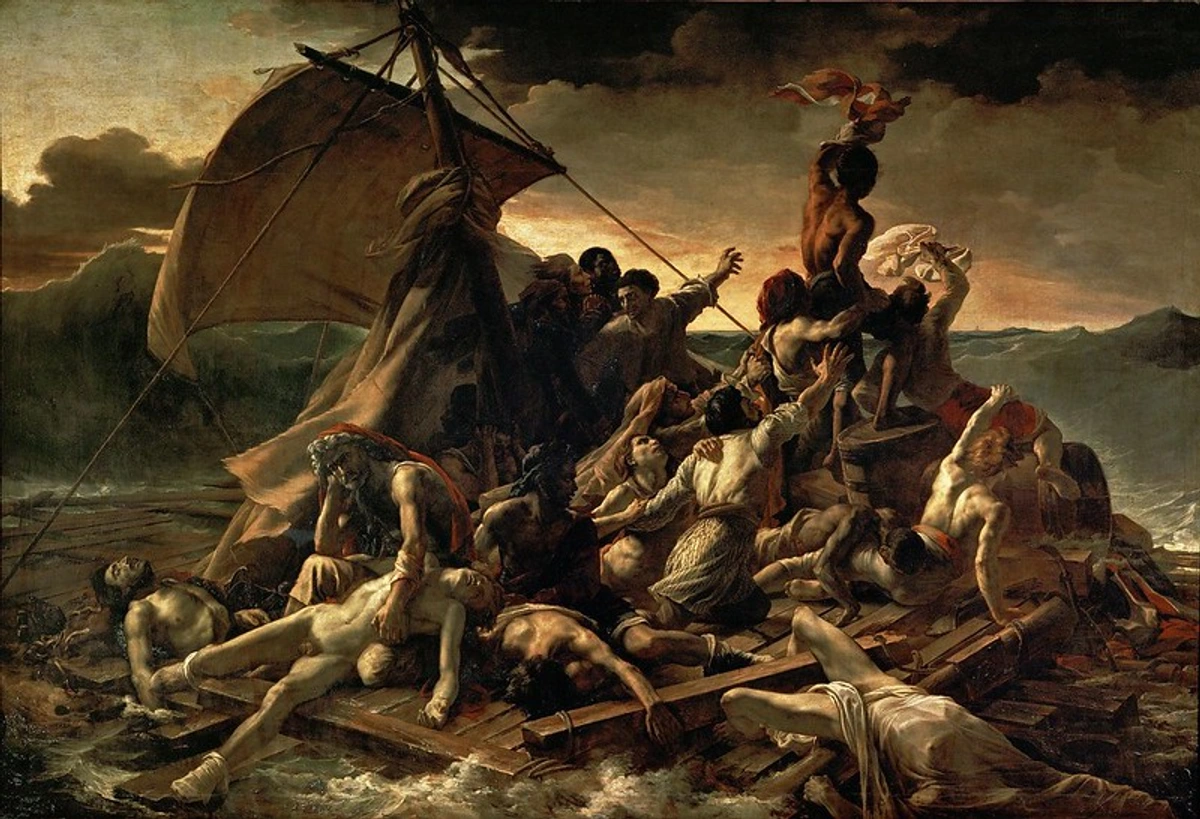
Even a single, dramatic image can imply a narrative and the passage of time leading up to or following the depicted moment. Géricault's The Raft of the Medusa, while capturing a specific point of crisis, is imbued with the duration of the survivors' ordeal and the hope for rescue, making the viewer contemplate the time they have already endured and the time they might have left. Think also of historical paintings depicting key events – they freeze a moment but are understood within a larger historical timeline. Renaissance fresco cycles, for example, often depicted the life of a saint or biblical story across multiple scenes, requiring the viewer to 'read' the wall over time.
Freezing, Blurring, and Fragmenting Time Within a Single Frame
Moving beyond telling a story over time, some artists focused intensely on capturing the feeling of a specific moment or even showing multiple moments at once. The Impressionists were masters at capturing the fleeting instant – the way light hit the water at a certain hour, the bustle of a city street. Their quick brushstrokes conveyed immediacy, a snapshot of a fleeting instant. It wasn't about telling a long story, but about preserving the sensation of now. Trying to capture that specific quality of light before it shifts... it's a chase I know well in my own painting process, a race against the sun. Photography, with its ability to mechanically freeze a fraction of a second, profoundly influenced artists, pushing painting to explore the experience of the moment rather than just its static appearance. Photography itself has also evolved to manipulate time, from long exposures that blur motion to time-lapse sequences that compress hours or days into seconds.
![]()
Think of Edward Hopper's quiet, suspended moments that feel pregnant with unspoken duration, or even the intense emotion frozen in time in Munch's "The Scream".
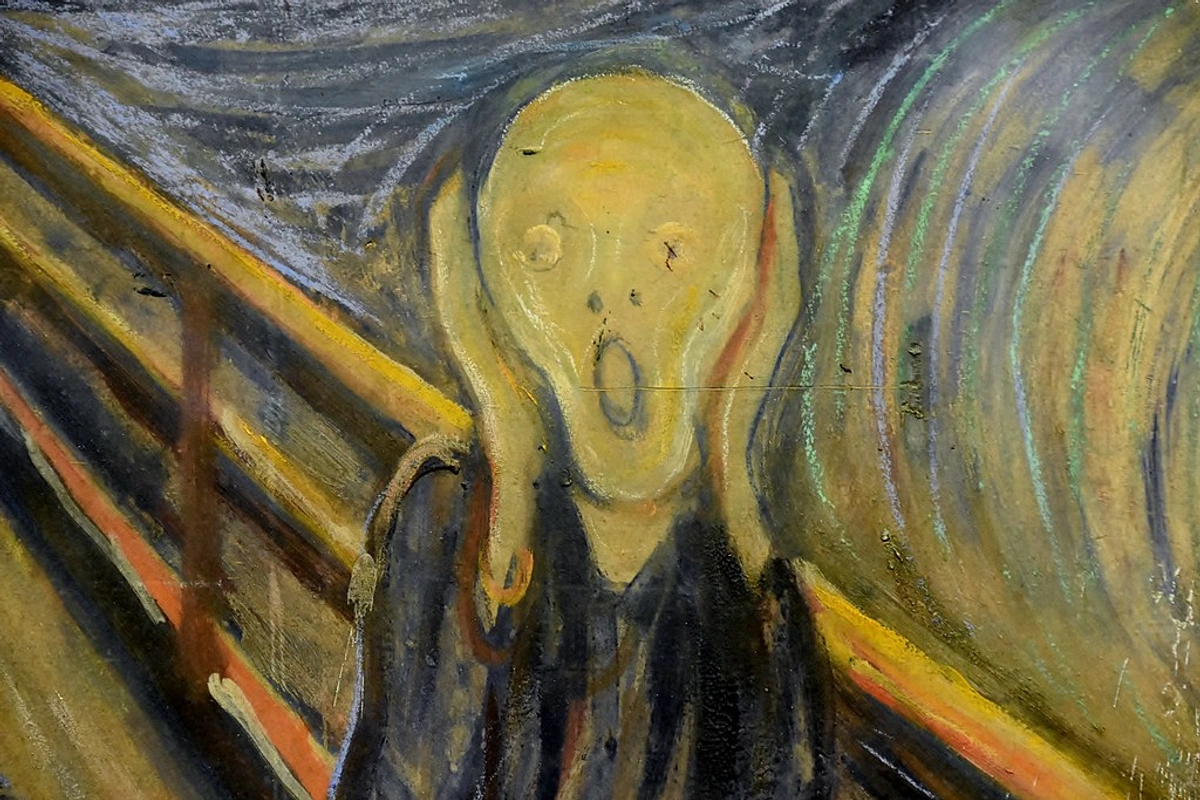
Other movements sought to show time within the frame itself. Futurism, for example, used techniques like blurring and repetition to depict speed and motion, showing multiple moments of an object's movement simultaneously. Think of Giacomo Balla's Dynamism of a Dog on a Leash or Umberto Boccioni's paintings and sculptures like Unique Forms of Continuity in Space which embody speed and fluid motion. Cubism also fractured objects and depicted them from multiple viewpoints at once, suggesting a temporal experience of walking around the object and seeing it over time, all compressed into a single image. It's like seeing the past, present, and near future of an object simultaneously, a true visual representation of the fourth dimension – time – integrated into a static two-dimensional plane.
Abstracting the Fourth Dimension: Evoking Time's Feel
Moving further from direct representation, others tackled the very idea of time. This is where abstract art often steps in. Artists use elements like line, shape, and color to evoke feelings associated with time – speed, slowness, rhythm, chaos, stillness. Think of the dynamic energy in a Futurist painting like Umberto Boccioni's Unique Forms of Continuity in Space, suggesting speed and the blur of motion, or the meditative quality of a Mark Rothko color field painting that seems to suspend time altogether. It's less about depiction and more about sensation. Jagged, diagonal lines might suggest frantic speed, while long, horizontal washes of color can feel like slow, deep breaths. Thick, built-up layers of paint can suggest the slow accumulation of time, embedding the duration of the artist's labor into the physical surface. The rhythm of repeated shapes or lines can create a visual pulse that mimics the passage of time. It's a sensation I often chase in my own abstract work – trying to bottle that feeling of captured energy or a suspended breath (you can see some attempts here). Abstract Expressionism, for instance, often captures the time of the artist's gesture and emotional state in the moment of creation, making the process itself visible.
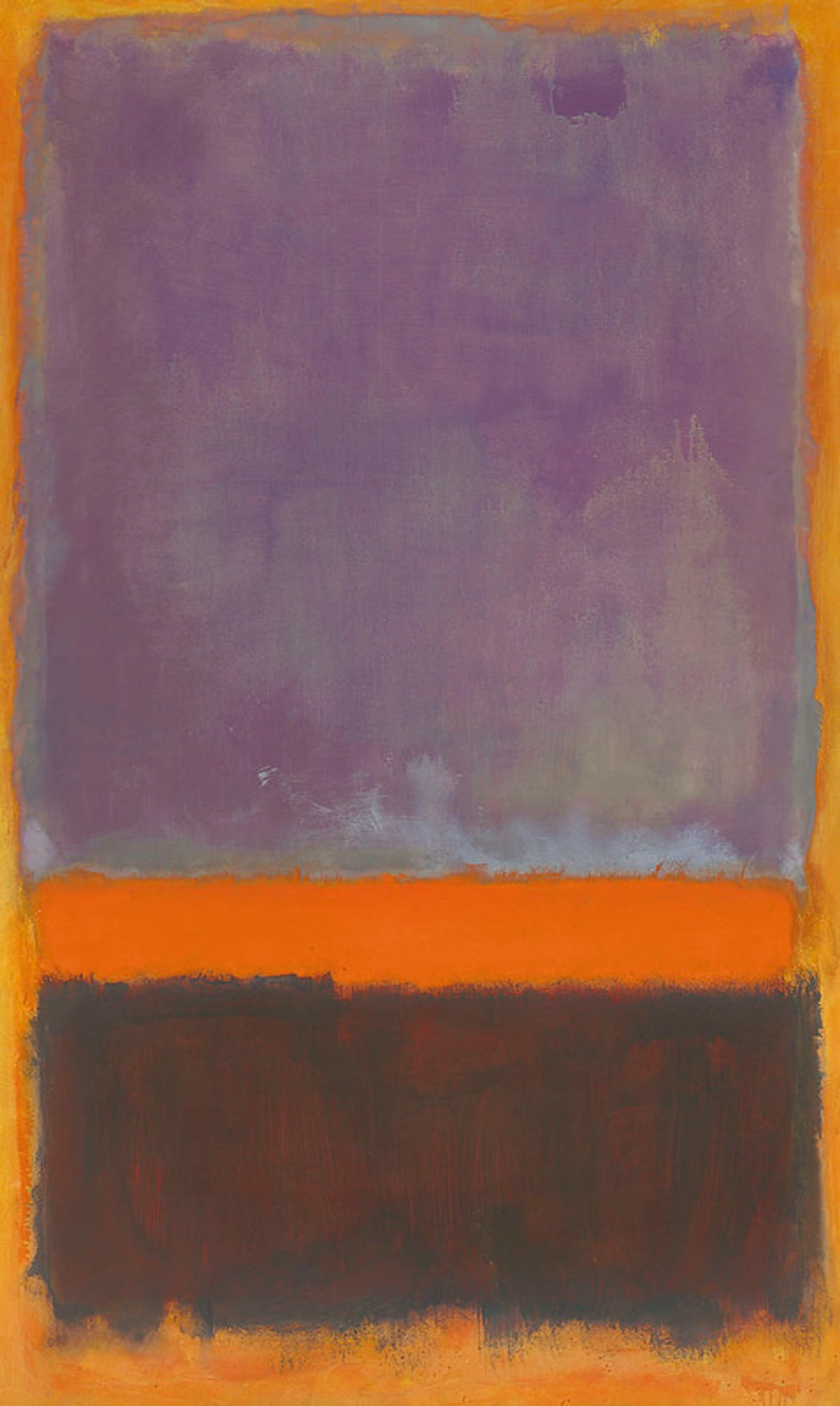
Time as the Medium: Duration, Process, and Ephemerality
Some art forms use time as their actual canvas. Performance art, like the work of Marina Abramović or Tehching Hsieh, unfolds over a specific duration. The experience is the passage of time, often testing endurance or highlighting the ephemeral nature of the moment.
Video art and installation art (think Bill Viola's slow-motion pieces or Christian Marclay's The Clock) manipulate duration and sequence directly, making the viewer acutely aware of time passing or being altered. Film, of course, was a crucial precursor here, fundamentally built on the manipulation of time through editing and sequence.
Kinetic sculptures, like Alexander Calder's mobiles or Janet Echelman's net sculptures, move and change over time, incorporating duration into their physical being.
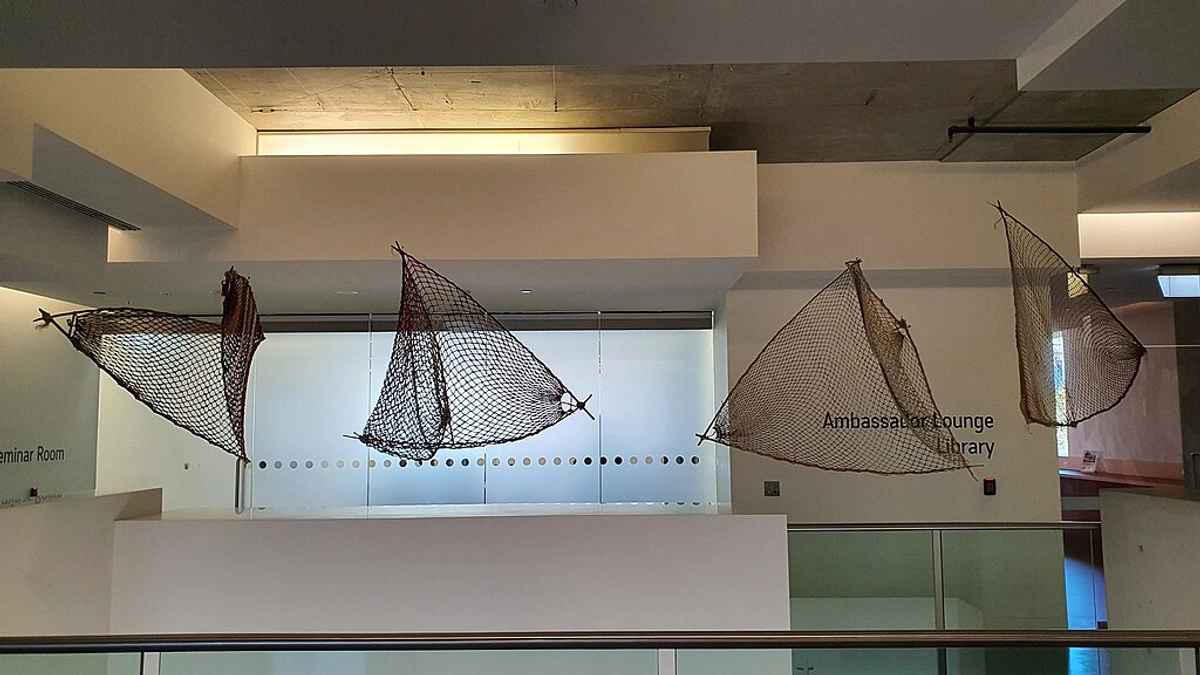
Process Art is an artistic approach where the act of making and its duration are central. The time spent performing the action, the sequence of steps, and the changes that occur during creation are integral to the artwork's meaning. Think of Richard Serra's splash pieces or some forms of conceptual art where instructions are followed over time. The viewer is often invited to contemplate the time and labor involved in the making.
Some artists even incorporate decay and impermanence as a deliberate element, making the artwork's physical transformation over time part of its meaning. Dieter Roth's works using food or organic materials, or Cornelia Parker's ice sculptures that melt, are prime examples. The artwork exists for a finite time, mirroring our own existence and the relentless march of entropy. This focus on ephemerality contrasts sharply with traditional art's pursuit of permanence, using time's destructive power creatively.
Land art, such as Robert Smithson's Spiral Jetty or Andy Goldsworthy's ephemeral works, evolves with the seasons and environmental changes, marking time on a geological or natural scale.
Even digital and internet art explore time through duration, loops, user interaction, real-time data feeds, and the ephemeral nature of online existence. Generative art, for instance, can evolve over time based on algorithms, creating a unique temporal experience for the viewer. The potential for infinite loops or real-time data integration offers entirely new temporal dimensions, sometimes even incorporating 'real-time' data streams to make the artwork constantly reflect the present moment.
Sound art, too, inherently deals with time through rhythm, duration, sequence, and the layering of audio elements, creating immersive temporal experiences for the listener. Think of a sound installation that changes subtly over hours, or a piece built on repeating loops that shift and evolve over time. Janet Cardiff's audio walks, for example, layer recorded sound onto the listener's present environment, creating a complex temporal experience.
For ephemeral art forms like performance or temporary installations, archives and documentation (photography, video, written accounts) become crucial. While not the artwork itself, these records create a secondary, enduring temporal layer, preserving the memory and context of the transient piece for future audiences and scholars.
Time in Series and Light
Artists also explore time through series or multi-panel works that document incremental change or variations over time. Claude Monet's series of Haystacks or Rouen Cathedral, painted at different times of day and year, capture the fleeting effects of light and atmosphere across temporal shifts. Bernd and Hilla Becher's photographic typologies of industrial structures document variations within a specific form over time and location, creating a temporal archive. On Kawara's Today series, where he painted the date every day, is a direct, systematic recording of the passage of time.
Another fundamental tool is the use of light and shadow. Artists throughout history have used chiaroscuro (strong contrasts between light and dark) to create drama and suggest fleeting moments, or depicted the changing quality of light to indicate the time of day or the passage from dawn to dusk. Think of the dramatic lighting in Baroque paintings by Caravaggio or Rembrandt, or the Impressionists' obsession with capturing the specific light of a moment. Light itself is inherently temporal, changing constantly, and artists use its depiction to ground a work in a specific time or evoke the feeling of time passing.
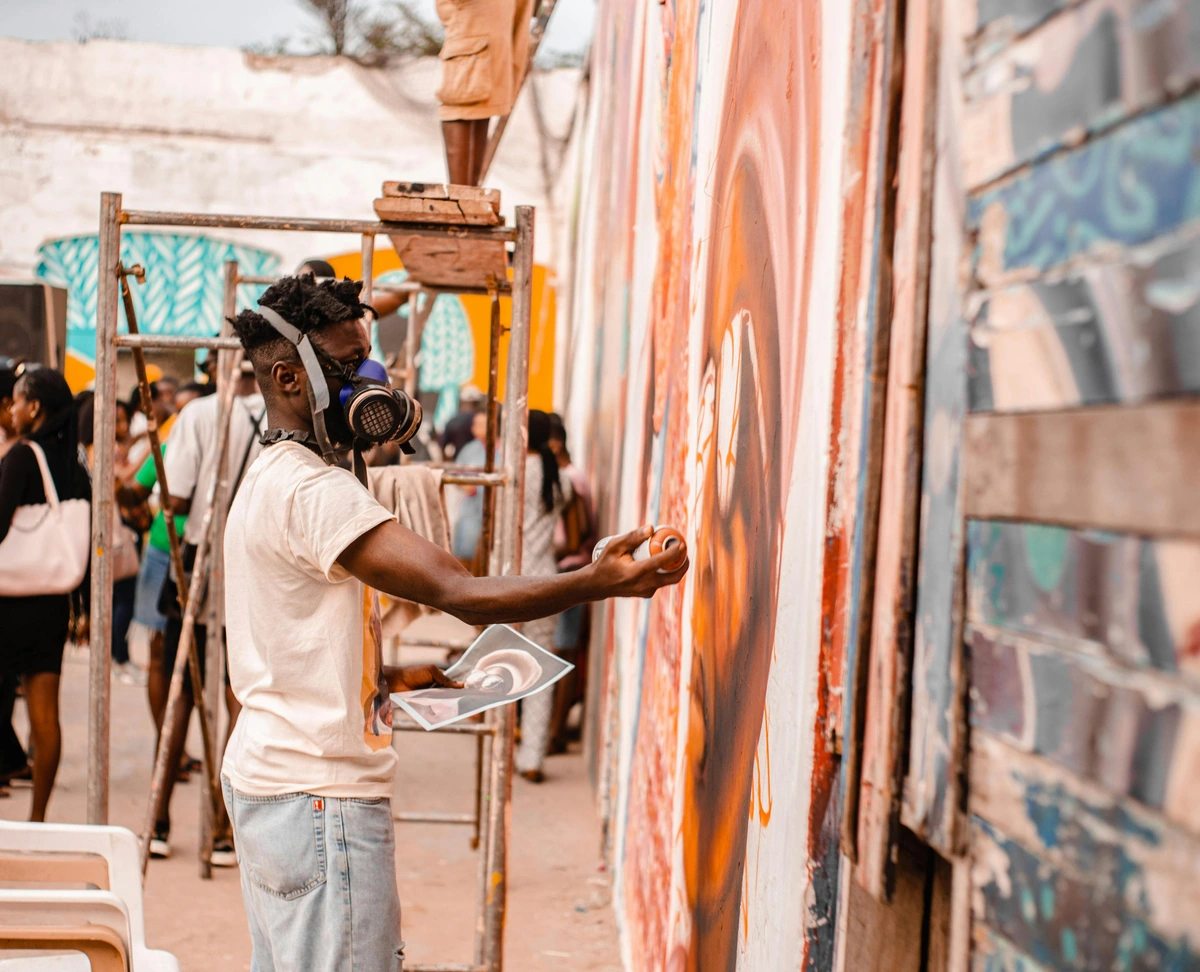
Beyond the West: Time in Global Art Perspectives
While the Western tradition often grapples with linear time and mortality (sometimes quite explicitly, as with Vanitas), artists worldwide have explored time through different lenses. These diverse perspectives remind us that the 'problem' of time in art isn't monolithic; it's culturally shaped and endlessly varied, broadening our understanding beyond our own temporal anxieties.
- Cyclical Time: In Hindu and Buddhist art, time is often depicted as cyclical, reflecting concepts of reincarnation and cosmic cycles. Mandalas, intricate geometric configurations, can represent the universe and the flow of time, meant for contemplation and meditation that unfolds over duration. The cycles of creation and destruction are common themes. Think of the Bhavacakra (Wheel of Life) in Tibetan Buddhism, a visual representation of the cyclical nature of existence and time.
- Narrative Scrolls: East Asian traditions, particularly in China and Japan, utilize handrolls (like the Admonitions Scroll attributed to Gu Kaizhi or Japanese emakimono) that unfold sequentially, guiding the viewer through a story or landscape over time, demanding a durational engagement. This is a form of visual narrative that explicitly incorporates the viewer's time, requiring physical interaction and movement through the piece.
- Dreamtime: For many Indigenous Australian cultures, the Dreamtime (or The Dreaming) is not a past era but an ever-present dimension that shapes reality and connects past, present, and future. This complex concept of time is often expressed through intricate dot paintings and other art forms used in ceremonies that bridge temporal divides, connecting the present participants to ancestral beings and events that exist outside linear time.
- Ancestral Time: Many African art forms connect the present with ancestral time, using masks and figures in rituals that bridge temporal divides and invoke the presence of spirits or forebears. The performance and use of these objects in specific temporal contexts are key to their meaning, creating a living link between the past and the present. Consider the elaborate masquerades of West Africa, where masks embody ancestral spirits and their appearance in the present is a temporal event.
- Islamic Art: While often focusing on eternal patterns and divine timelessness through geometry and calligraphy, Islamic art also incorporates temporal elements in narrative miniatures and the cyclical nature of calligraphic patterns. The intricate, repeating geometric patterns can evoke a sense of infinite, timeless order, while calligraphy often presents sacred texts that exist outside linear time.
- Mesoamerican Calendars: Ancient Mesoamerican cultures, like the Maya and Aztec, created complex calendar systems that were deeply intertwined with their art and architecture. Sculptures, codices, and monumental structures often incorporated temporal cycles, astronomical observations, and historical events, reflecting a sophisticated understanding and representation of time that was both cyclical and historical.
Exploring these diverse approaches highlights how deeply our understanding and representation of time are intertwined with cultural and philosophical beliefs. It's a reminder that my own Western-centric anxieties about linear time and mortality are just one way to slice the temporal pie. It's fascinating to see how different cultures conceptualize and visualize this fundamental dimension of existence.
The Artwork's Own Timeline: Creation, Aging, Meaning
But what happens after the paint dries? Does the artwork's relationship with time end there? Not at all. The artwork itself exists within time, undergoing its own temporal journey.
- Creation Time: Every piece takes time to make. Sometimes it’s a frantic burst of energy; other times, it’s months or years of slow, deliberate work. As an artist, I can tell you, the clock in the studio sometimes feels like it's mocking me. That process, that duration, is embedded in the final piece, even if you can't see it directly. The layers of paint hold the hours spent. The time spent staring, thinking, scraping back, adding... it's all part of the work's history. I remember one large abstract piece that took me over a year, layer by layer. Looking at it now, I don't just see the final image; I feel the time of its making, the different moods and struggles embedded in those layers. (And maybe a little bit of the frustration from those days when nothing seemed to work!)

- Lifespan & Change: Artworks age. Colors fade, materials decay (especially challenging for contemporary materials!). Conservation is a way of fighting against time's effects. Sometimes, restoration is needed to bring a piece back closer to its original state. This physical transformation over time is part of the object's history. Seeing one of my own early paintings recently, noticing how the varnish had yellowed slightly... it was a strange, tangible reminder of the years passed. It's a physical manifestation of time's passage on the object itself.
- Provenance: The history of ownership and exhibition, known as provenance, also adds a temporal layer to an artwork. Knowing where a piece has been, who has owned it, and how it has been displayed over decades or centuries contributes to its story and meaning, embedding it further within a historical timeline.
- Shifting Meanings: How we understand an artwork also changes over time. A piece that was radical once might seem tame now (Is Modern Art 'Bad'?). Historical context shifts, new interpretations arise. The dialogue between the artwork and its audience evolves across time. What did Guernica mean in 1937 versus today? And honestly, even my own relationship with pieces I made years ago changes. I look at them now and see the person I was then, the struggles I had, the ideas I was wrestling with. The artwork is the same, but my perception, shaped by my own timeline, is completely different. Consider how perceptions of works dealing with race, gender, or political events have evolved dramatically over decades or centuries, reflecting societal shifts in understanding and values. The viewer's own life journey and experiences also shape how they connect with a piece over their lifetime. Seeing a piece I first encountered as a student now, after years of my own artistic practice, reveals entirely new layers I couldn't see before. It's like the artwork waited for my own timeline to catch up.
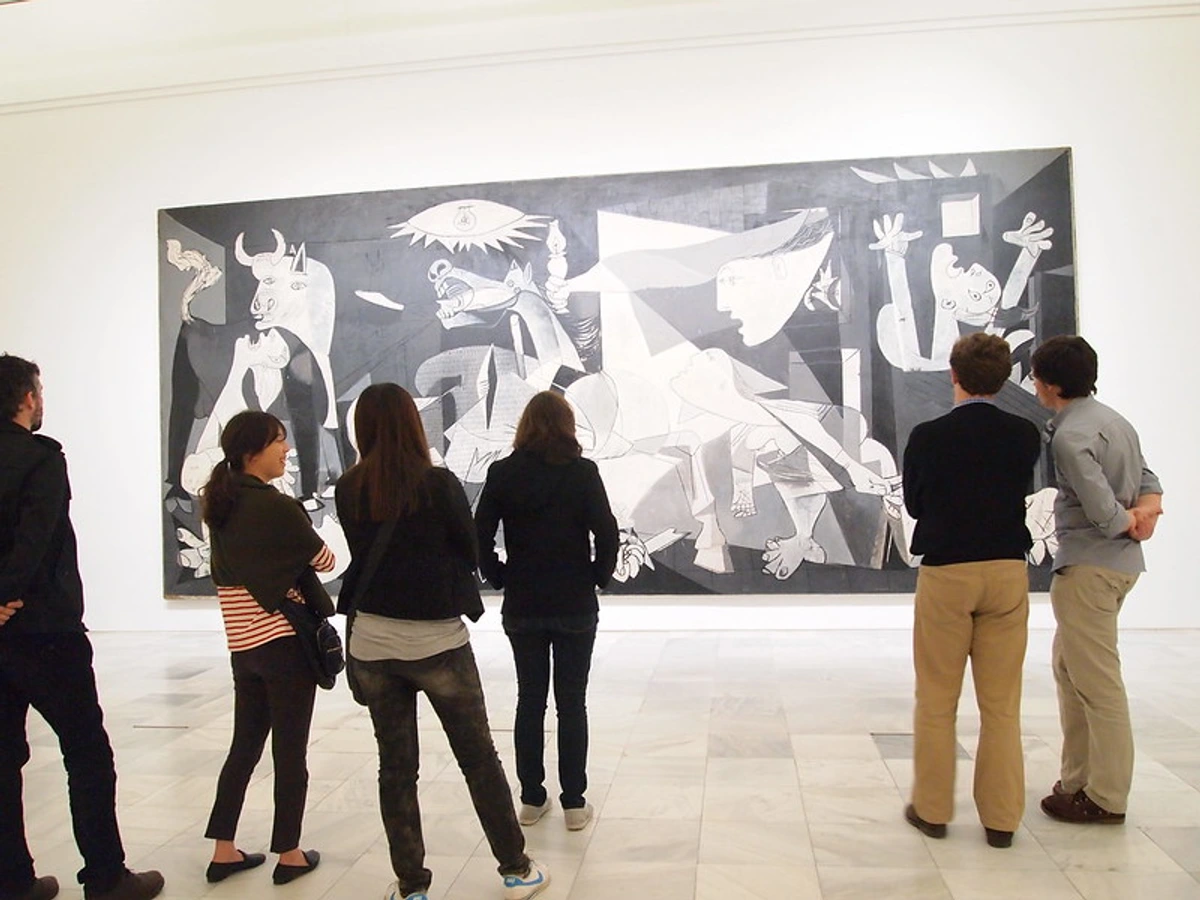
- Timelessness: Some artworks seem to transcend their original time and context, speaking to viewers across centuries. What makes a work feel 'timeless'? Often, it's a combination of universal themes (love, loss, beauty, mortality), masterful execution, and a certain enigmatic quality that allows for ongoing interpretation. A piece might capture a fleeting moment with such intensity that it feels eternally present, or explore a philosophical question that remains relevant regardless of technological or societal shifts. It's a fascinating paradox – art existing in time, yet sometimes feeling outside of it.
Losing (or Finding) Yourself in Art Time: Slow Looking and the Viewer's Experience
Have you ever stood in front of a painting in a gallery or museum and completely lost track of time? It happens to me often, sometimes even in my own little museum space. Art has this incredible ability to pull us out of the everyday rush. It can create a space for contemplation, slowing down our internal clock. The physical environment of a museum or gallery, often quiet and removed from the external world, contributes to this feeling of stepping into a different temporal zone.
This isn't just accidental; sometimes it's intentional. The concept of "slow looking" encourages viewers to spend extended time with a single artwork, resisting the urge to quickly consume and move on. Certain pieces, through their complexity, subtlety, or sheer scale, demand this durational engagement. They reward patience, allowing details and deeper meanings to emerge gradually. Think of a massive installation or a highly detailed historical painting – you need time to take it all in. Or consider a minimalist abstract piece; its subtlety might only reveal itself after minutes of quiet contemplation. For me, standing in front of a large Rothko color field painting can feel like time dissolves; the subtle shifts in color and texture demand a different kind of attention, pulling me out of my head and into the present moment of perception.
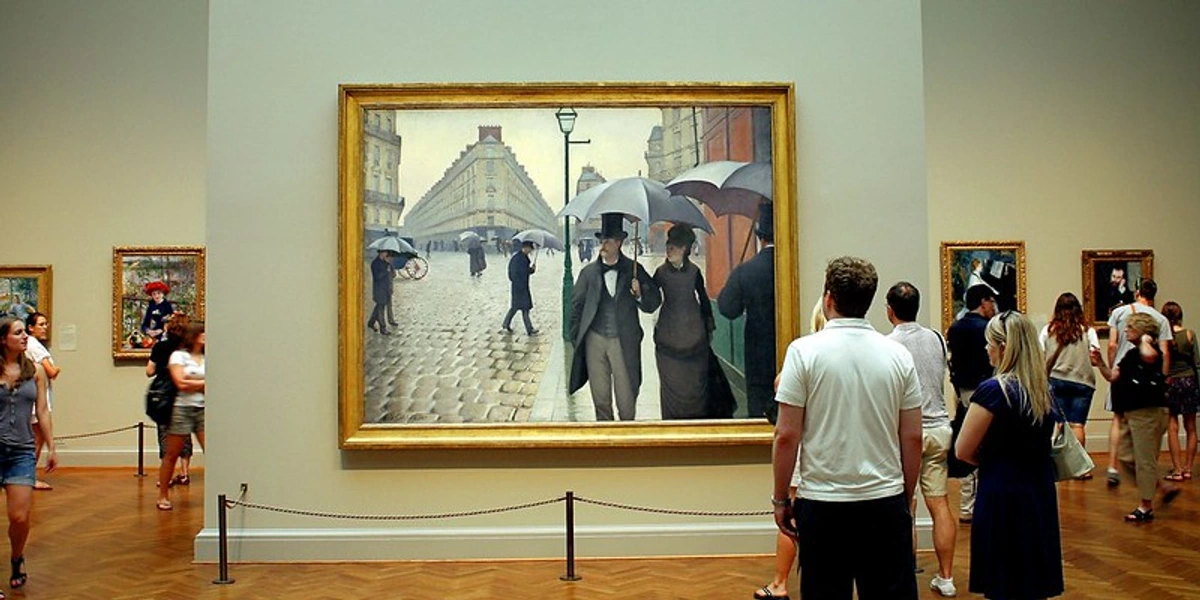
Beyond a single viewing, our relationship with an artwork can evolve over time. Seeing a piece again years later, perhaps in a different context or when you yourself have changed, can reveal new layers. The artwork remains, but your perception of it, shaped by your own life's timeline, shifts. Interactive art takes this further, where the viewer's actions and the time they invest directly influence the unfolding of the piece, making their temporal presence integral to the work itself.
Whether it's the meditative quality of an abstract piece, the intricate details of a historical work that demand close looking, or the emotional resonance that holds you captive, art offers a different kind of temporal experience. It’s a pause button, a moment of connection outside the usual tick-tock. It invites you to step into its time, or perhaps a timeless space it creates. So next time you're in a gallery, try picking just one piece and giving it ten minutes of your undivided attention. See what time reveals.
Time, Technology, and Identity: Contemporary Explorations
In our increasingly digital world, the relationship between art and time is constantly evolving. Contemporary artists are using new technologies to explore temporal concepts in ways previously unimaginable.
- Digital Duration: Video art, already mentioned, continues to push boundaries, with artists creating immersive installations that manipulate time through extreme slow motion, loops, or real-time feeds. Christian Marclay's The Clock is a prime example, synchronizing film clips to create a 24-hour real-time experience of cinematic time.
- Generative Art: Art created by algorithms can evolve over time, presenting a dynamic, non-static artwork whose form is shaped by code and potentially real-time data. This introduces a new layer of temporality, where the artwork is not a fixed object but a process unfolding over time. Some generative pieces even incorporate live data feeds (like weather patterns or stock market fluctuations) to make the artwork a direct, real-time reflection of the present moment.
- Interactive and VR Art: These forms often require the viewer's active participation over a specific duration. The artwork's experience is directly tied to the time the viewer spends interacting with it, and their actions can influence its temporal unfolding. Virtual reality can create entirely new temporal environments, allowing artists to build worlds where time behaves differently – speeding up, slowing down, or looping.
- NFTs and Blockchain: The emergence of NFTs (Non-Fungible Tokens) and blockchain technology introduces new ways to think about the timeline and ownership history of digital art. The blockchain creates a permanent, timestamped record of creation and transactions, establishing a unique provenance for digital works that previously existed in a more ephemeral state. It's a digital timestamp, anchoring the artwork to a specific moment in its digital history.
- Time and Identity in the Digital Age: How do our online identities, shaped by fragmented moments and constant updates, relate to our sense of self over time? Artists are exploring themes of digital memory, online presence as a form of temporal existence, and the blurring lines between past and present in the age of instant recall and perpetual archiving. Social media feeds, for instance, create a constantly updating, fragmented timeline of self that artists are dissecting and recontextualizing.
These contemporary approaches demonstrate that the artistic conversation about time is far from over. As our experience of time is shaped by technology and societal changes, artists will continue to find new ways to reflect, question, and capture this fundamental dimension of existence.
Key Artists and Works Exploring Time
While countless artists touch on time, some have made it a central theme. Here are just a few notable examples, many of whom you can find discussed in more detail in other articles:
- Salvador Dalí: Famous for The Persistence of Memory (1931) and its melting clocks, exploring subjective time and the subconscious.
- Claude Monet: Master Impressionist focused on capturing fleeting moments of light and atmosphere (e.g., Impression, Sunrise, Rouen Cathedral series).
- Umberto Boccioni: Leading Futurist sculptor and painter aiming to depict speed and dynamism (e.g., Unique Forms of Continuity in Space).
- Marina Abramović: Pioneer of performance art, using duration and endurance as core elements (e.g., The Artist is Present). Find out more in the Ultimate Guide to Marina Abramović.
- On Kawara: Conceptual artist whose Today series meticulously documented the date each painting was made, marking the passage of days.
- Hiroshi Sugimoto: Photographer known for long-exposure works, like his Theaters series, capturing the entire duration of a film in a single white screen.
- Christian Marclay: Creator of The Clock (2010), a 24-hour video montage using film clips featuring clocks or references to time, synchronized with real-time.
- Bill Viola: Video artist often using extreme slow motion to explore emotional and spiritual states, stretching moments into near-eternity.
- Roman Opalka: Painter who spent decades painting consecutive numbers (1 to infinity) on canvas, a profound meditation on time and existence.
- Andy Goldsworthy: Land artist creating ephemeral works using natural materials, documenting their creation and decay over time.
- Dieter Roth: Artist known for using organic materials that decay over time, making the process of decomposition part of the artwork.
- Bruce Nauman: Explored duration and repetition in video and performance art.
- Tehching Hsieh: Known for his year-long performance pieces that rigorously documented the passage of time and the artist's existence within it.
- Janet Echelman: Creates large-scale net sculptures that respond to wind and light, constantly changing over time and interacting with the environment.
- Trevor Paglen: Explores themes of surveillance and data, often visualizing the invisible flows of information and power that operate across time and space.
- Janet Cardiff: Known for her 'audio walks' which create a layered temporal experience for the listener, blending the present environment with recorded sound and narrative from another time.
- Bernd and Hilla Becher: Photographers known for their systematic typologies of industrial buildings, documenting architectural forms and their changes over time through rigorous, repetitive observation.
This is just a starting point! Many artists across different genres and movements engage with time. Exploring their work is a great way to see these concepts in action. You can find many of these artists represented in museums worldwide or art galleries. And don't forget to look for contemporary artists who might be exploring time through new media, performance, or installation in smaller, experimental galleries or media art centers!
So, What's the Time?
Art doesn't give us a definitive answer about time. It can't stop the clock or turn it back. But what it can do is offer infinite ways to reflect on it, feel it, question it, and maybe even make peace with it. It holds moments, tells stories, evokes memories, confronts mortality, and reminds us of both the fleeting nature of our existence and the potential for ideas and beauty to endure.
From ancient Egyptian journeys to the afterlife to Dalí's melting clocks, from Monet's fleeting light to Abramović's durational performances, artists keep trying to grasp this slippery concept. And maybe the attempt itself, the ongoing conversation across canvases, screens, and centuries, is the most timeless thing of all. Now, if you'll excuse me, I think I hear my easel calling... or maybe that's just the deadline reminding me time's up. (Seriously, where did the last hour go?)
Frequently Asked Questions (FAQ) About Art and Time
Q1: What art movements specifically focused on time and motion?
A: Futurism (early 20th century) was explicitly obsessed with speed, technology, and the dynamism of modern life, aiming to depict motion and the passage of time, often showing multiple moments simultaneously. Kinetic Art, emerging later, incorporates actual physical movement, making time a literal component. Performance Art and Video Art inherently use duration as a key element.
Q2: How does photography capture time differently than painting?
A: Photography inherently freezes a specific fraction of a second, offering a direct, mechanical record of a moment. Painting, even when depicting a moment, involves the artist's interpretation, memory, and the time taken to create the image, often resulting in a more subjective or synthesized representation of time. Painting can also depict multiple moments or the feeling of time passing within a single frame, which traditional photography typically cannot do without manipulation. Modern photography techniques like long exposures or time-lapse sequences, however, explicitly engage with duration.
Q3: Can abstract art really be 'about' time?
A: Absolutely. While not depicting clocks or calendars, [abstract art](/finder/page/famous abstract art) uses elements like rhythm, speed of brushstrokes, layering, color relationships (like in Abstract Expressionism), and composition to evoke feelings and concepts related to time, such as duration, energy, stillness, or chaos. It's about the experience or feeling of time rather than its literal representation.
Q4: Are there famous artworks specifically about memory?
A: Yes, many! Surrealist works often delve into the subconscious and memory (think Dalí again, or René Magritte). Conceptual artists like Christian Boltanski use installations and photographs to explore collective and personal memory. Even portraits or landscapes can be deeply imbued with memory and nostalgia for the artist or viewer. The concept of the visual palimpsest is very relevant here.
Q5: How does the concept of time affect the value of art?
A: Time plays a complex role. The age of an artwork (historical significance), the period it represents within an artist's career (see artist timelines like mine), its condition over time (art care is key!), and how perceptions of the artist or movement change over time all influence art prices and value. The time invested in creation can also be a factor, though often less direct than market trends or provenance.
Q6: How does time affect the materials artists use?
A: Artists must consider the longevity of their materials. Traditional mediums like oil paint on canvas or stone sculpture have proven durability. However, many contemporary artists use ephemeral materials (like food, plants, or digital media) intentionally, making the artwork's decay or obsolescence part of its concept. Conservation science constantly evolves to address the challenges of preserving diverse materials over time.
Q7: Are there artists who explore cyclical time rather than linear time?
A: Yes, particularly artists drawing from non-Western philosophies or spiritual traditions (like Hinduism or Buddhism) often explore cyclical themes. Land artists whose work changes with the seasons (like Andy Goldsworthy) also engage with natural cycles. Some conceptual or performance artists might create works that loop or repeat, challenging linear progression.
Q8: How is time represented in digital or new media art?
A: Digital art offers unique ways to explore time. This includes interactive works where the viewer's engagement unfolds the piece over time, generative art that evolves according to algorithms, video installations manipulating duration (like slow-motion or time-lapse), net art dealing with the speed and ephemerality of information, and works exploring digital decay or obsolescence. The potential for infinite loops or real-time data integration also offers new temporal dimensions.
Q9: What is 'slow looking' in art?
A: Slow looking is a practice that encourages viewers to spend an extended period of time with a single artwork, moving beyond a quick glance to observe details, consider the artist's choices, and allow for deeper engagement and personal reflection. It's a conscious effort to resist the fast pace of modern life and experience art more fully over time.
Q10: How can I find art that explores themes of time?
A: You can explore art galleries and museums worldwide, looking for works by the artists mentioned in this article or movements like Futurism, Impressionism, or Conceptual Art. Many contemporary artists also engage with time through performance, video, or installation. Online databases and art history resources can also help you search for specific themes or artists. And of course, abstract art, like some of my own pieces (available here), often aims to evoke feelings and sensations that relate to the experience of time, speed, or stillness.
Q11: How do ephemerality and permanence relate to time in art?
A: Ephemeral art forms (like performance, temporary installations, or works using decaying materials) embrace the transient nature of time, existing only for a limited duration. This contrasts with traditional, more permanent mediums like painting or sculpture, which aim to endure through time. Both approaches use time – either its fleetingness or its potential for longevity – as a core element of their meaning.
Q12: What is Process Art and how does it relate to time?
A: Process Art is an artistic movement where the process of making the art is considered as important, or more important, than the finished product. Time is crucial here because the duration of the actions, the sequence of steps, and the changes that occur during the creation process are integral to the artwork's meaning. The viewer is often invited to consider the time and labor involved in the making.
Q13: How do artists explore the relationship between time and identity?
A: Artists explore this through various means, including self-portraits that document aging, works that incorporate personal history and memory, pieces that reflect on cultural or collective memory, and contemporary art that examines digital identity and its temporal nature. Performance art, in particular, can use the artist's body and endurance over time to explore themes of personal transformation and identity.
Q14: Are there museums or galleries particularly known for showcasing art related to time?
A: While not exclusively dedicated to the theme of time, institutions focusing on modern and contemporary art often have strong collections of works that engage with temporal concepts, particularly in areas like video art, performance documentation, and installation. Look for museums with strong media art departments, performance art archives, or those known for experimental installations. Institutions like the Tate Modern, MoMA, or the Centre Pompidou are good places to start, as are smaller, experimental galleries and media art centers!
Q15: How does Sound Art engage with time?
A: Sound Art inherently deals with time through its very nature. It uses elements like duration, rhythm, sequence, layering of sounds, and silence to create temporal experiences for the listener. Sound installations can unfold over long periods, audio walks blend present time with recorded past narratives, and pieces built on loops or evolving algorithms create unique temporal structures.
Q16: How does architecture relate to time in art?
A: Architecture interacts with time in multiple ways. Buildings are physical objects that endure through time, subject to aging and change. Their design can reflect the temporal context of their creation (historical styles). Furthermore, the experience of moving through architectural space is inherently temporal, unfolding over duration. Some architectural installations or temporary structures also engage with time through their limited lifespan or interaction with natural cycles (like light changing throughout the day).
Q17: What is provenance in art and how does it relate to time?
A: Provenance is the documented history of ownership and location of an artwork. It creates a timeline for the object, tracing its journey through time from creation to the present day. This history adds layers of meaning and context to the artwork and is crucial for authentication and valuation.
Q18: How do NFTs and blockchain technology relate to time in digital art?
A: NFTs (Non-Fungible Tokens) and blockchain technology provide a timestamped, immutable record of ownership and transaction history for digital assets. For digital art, which can otherwise be easily copied and lacks a traditional physical provenance, the blockchain creates a verifiable timeline and history, establishing a form of digital provenance that tracks the artwork's journey through time on the digital ledger.
Q19: How do artists use light to represent time?
A: Artists use light to represent time by depicting the changing quality of natural light throughout the day or seasons (e.g., Impressionism), using dramatic contrasts (chiaroscuro) to suggest fleeting moments, or employing techniques like long exposure photography to capture the passage of time through blurred light trails.
Q20: What are art series or typologies and how do they relate to time?
A: Art series or typologies involve creating multiple related works that explore a subject through repetition or incremental change. This approach inherently engages with time by documenting variations over a period, showing evolution, or creating a temporal archive through systematic observation, like Monet's series of the same subject under different light conditions or the Bechers' photographic typologies.




